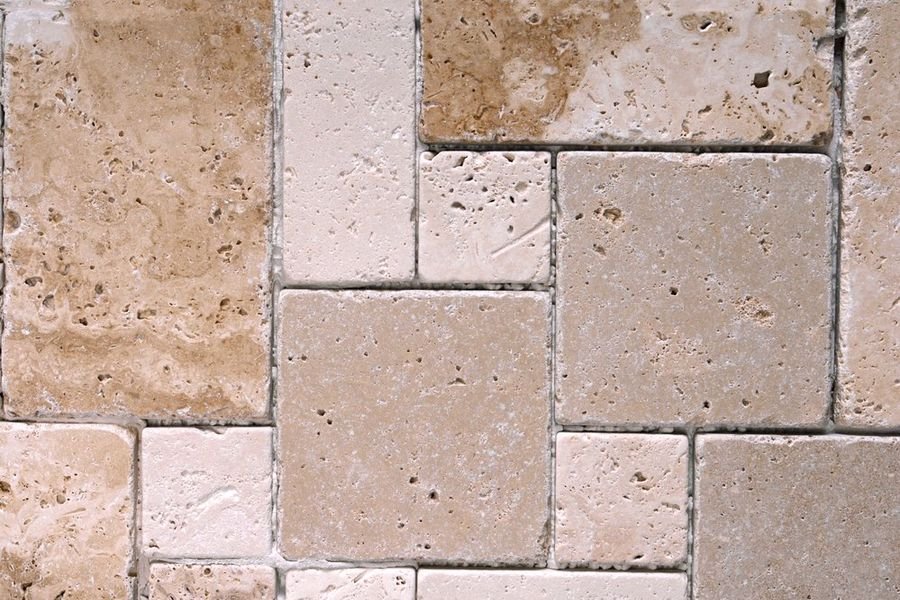Is Travertine Cooler Than Pavers?
A well-maintained yard makes a more welcoming outdoor space, even if your yard is subjected to extreme sun exposure. As you go through possible materials for a patio makeover, you may be asking, is travertine cooler than pavers? Let's get through the selection process and learn more about travertine's cooling nature.
Is Travertine Cooler Than Pavers?
Travertine is 20% to 30% cooler than most of its counterpart pavers due to its porous structure that absorbs water quickly. Its ability to expel heat results in a cooler surface, even in hot weather. The low surface temperature makes travertine a better choice for patio construction or renovation.
Travertine is a majestic terrestrial limestone formed from the rapid precipitation of calcium carbonate around mineral springs. Its porous nature soaks up water very well, making travertine cooler to touch compared to other stones.
Being porous or permeable means it won't hold on to heat much longer. Rather, the travertine would pass the heat down to the earth beneath it. This is why travertine is a better material for high-traffic areas like fire pits, driveways, walkways, and patios.
Calcium carbonate, a primary component of shells, makes travertine come in various sizes, thicknesses, cuts, and patterns. While the absorbent structure creates a rougher texture, this also provides better traction for slippery areas, such as pool decks and driveways.
Travertine as a Natural Stone Paver
Natural stone pavers are among the most durable and coolest materials for patios, making them low-maintenance components that would age beautifully. Aside from travertine, the most common natural stone pavers include flagstone, slate, and granite.
However, travertine is increasingly becoming more in-demand among homeowners because it stays cool on hot days, can resist discoloration, and travertine is easier to clean and maintain. Besides that, travertine is one of the most alluring natural stone materials to visually enhance your home.
As a testament to travertine's durability, the Roman Colosseum has 100,000 cubic meters of travertine stone. The stone helps this ancient amphitheater withstand fire, earthquakes, and other natural calamities. While not wholly indestructible, travertine doesn't easily crack due to its resistance to water and moisture.
Travertine Vs Other Paver Materials
The global ceramic and natural stone market size expects a 5.8% growth from 2021 to 2028. This growth is mainly due to the construction sector's expansion, rise in renovation projects, and increased demand for highly durable components.
Being a natural stone, travertine is among the most reliable materials because of its porosity. This feature provides quick-drying properties and resistance to high temperatures. In effect, travertine is smooth and cool to walk on, as opposed to other natural stones.
With that said, see how travertine fares against other paver materials.
Brick Pavers: While popular among homeowners due to their low cost, brick pavers are notorious for absorbing and retaining heat. In contrast to travertine, brick pavers get scorching hot when exposed to sunlight, making it impossible to walk barefoot outside.
Concrete Pavers: Concrete pavers come from a mixture of sand, gravel, dye, cement, and water. While it won't feel as hot as brick pavers, concrete pavers have chemical additives that reflect and absorb lots of sunlight and heat. Unlike travertine which is resistant to freeze-thaw cycles, concrete tends to crack under extreme weather conditions.
Porcelain: Like travertine, porcelain is also cool to touch, even when your home feels baked in the afternoon sun. Porcelain comes from a high-heat firing process that enables it to become water-resistant and rigid. However, porcelain is non-porous, which means it doesn't stick as swiftly as travertine.
Related Questions
Is Travertine More Expensive Than Pavers?
Travertine pavers are natural stones, and there are only certain quarries where you can get the stone. In effect, travertine is a bit difficult to find and more expensive. However, you will reap the long-term advantages of using travertine, especially its cooling benefits.
What's an Alternative to Travertine Paver?
While porcelain is an excellent alternative to travertine because of its cheaper price, it's also more brittle and dense. Slates and granites are also good options because they are more accessible to source locally, although they aren't as cooling as travertine.
What Are Travertine Designs?
You can hire a designer to create 3 types of designs or finishes. Opt for tumbled if you want a textured and porous finish. You can also choose either honed for a smooth and matte effect or polished for a smooth and shiny finish.
Conclusion
Travertine is cooler than pavers because its porous properties absorb water easily. Now that you have all the information you need, it's time to work with travertine paver experts to achieve your dream makeover. As ICPI certified paver specialists, our designers and installers are experts on the latest industry practices, materials, and techniques.

